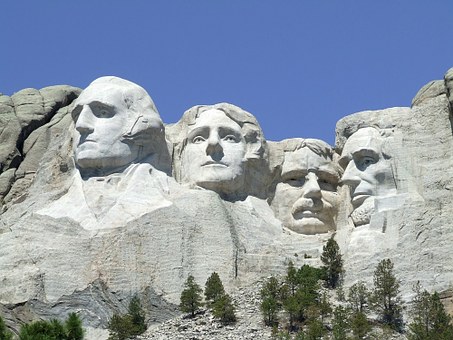Have you ever watched a President enter a room? People stand at attention while Hail to the Chief is played by the band. The music dies down, the room gets quiet, and the audience waits for the opening remarks. Public speakers can take a lesson from the Presidents. Presenters who sound and act presidential command respect from their audience. They exude a type of gravitas. What they all have in common are these four qualities in their presentations. Let’s examine the ABCD’s of speaking like a president.
Authenticity. The mark of a great public speaker is the ability to connect with the audience. And that means being real and staying true to your style. President Roosevelt utilized radio to give his fireside chats. This style of connecting to the people was unique to him. It felt like he was talking to each listener individually. President Clinton had an ability to look directly at each person and make an eye connection. People thought he was talking just to them. He repeated what people said so that they felt heard and understood. Empathetic listening became his signature style. This quality allowed him to speak to kings or commoners and still appear real.
Brevity. President Lincoln surprised his constituents when his Gettysburg address lasted two minutes. How many of the longer presidential addresses do we recall? Yet the Gettysburg address is one of the most remembered. Who can’t recite “Four score and seven years ago...” ?
During the Battle of Britain, Prime Minister Winston Churchill implored his staff to make their memos shorter. He stated, "To do our work, we all have to read a mass of papers. Nearly all of them are far too long. This wastes time, while energy has to be spent in looking for the essential points.”
So many leaders and executives lose credibility and the attention of their audience because they talk too long and don’t get to the point. There’s a reason TED talks are 18 to 20 minutes.
Franklin Delano Roosevelt said it best. “Be be sincere, be brief, be seated.” That advice is even more relevant today.
Clarity of Message. Related to brevity is the clarity of a message. A message is obfuscated when the speaker goes down a rabbit hole or gets caught in the weeds of detail and minutia. President Reagan was known as the “Great Communicator.” He spoke simply and made use of many rhetorical techniques such as pausing, conviction, and memorable sound bites. One of his most memorable quotes was “Mr Gorbachev, tear down this wall.” It was both visual, simple, and underscored with passion.
Simplicity is the key to clarity. The rule of three will make listening easier to follow for the audience and keep the message clear. When Bill Clinton was running for the presidency, he had three goals for his platform: jobs, the economy, and healthcare. People more easily remember a message when it’s grouped in threes.
Demeanor. In order to speak like a president, it’s vital to be congruent. That is, your demeanor must match your words, tone, and body language.
President Obama exuded a quiet confidence in the way he spoke, He communicated presence through eye contact and by how he held the presidential space at the lectern. His resonant voice and measured pauses made him reassuring, thoughtful, yet approachable. The slower approach conveyed gravitas. Leaders don’t rush, speak fast, or use staccato movements. His demeanor communicated he was in charge.
You don’t have to run for office to speak like a president. Practice these four tips to sound presidential and take your speaking to the top.

